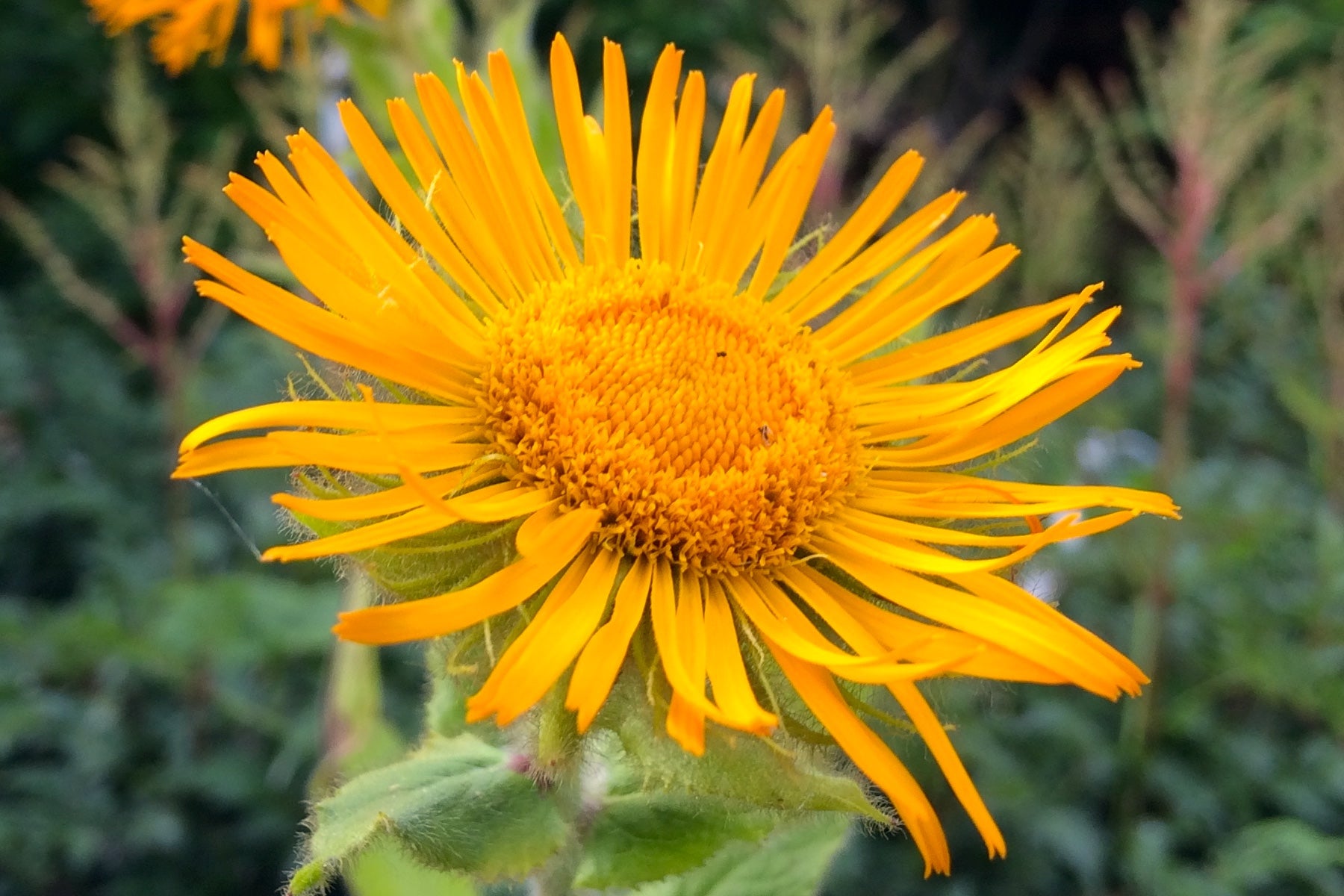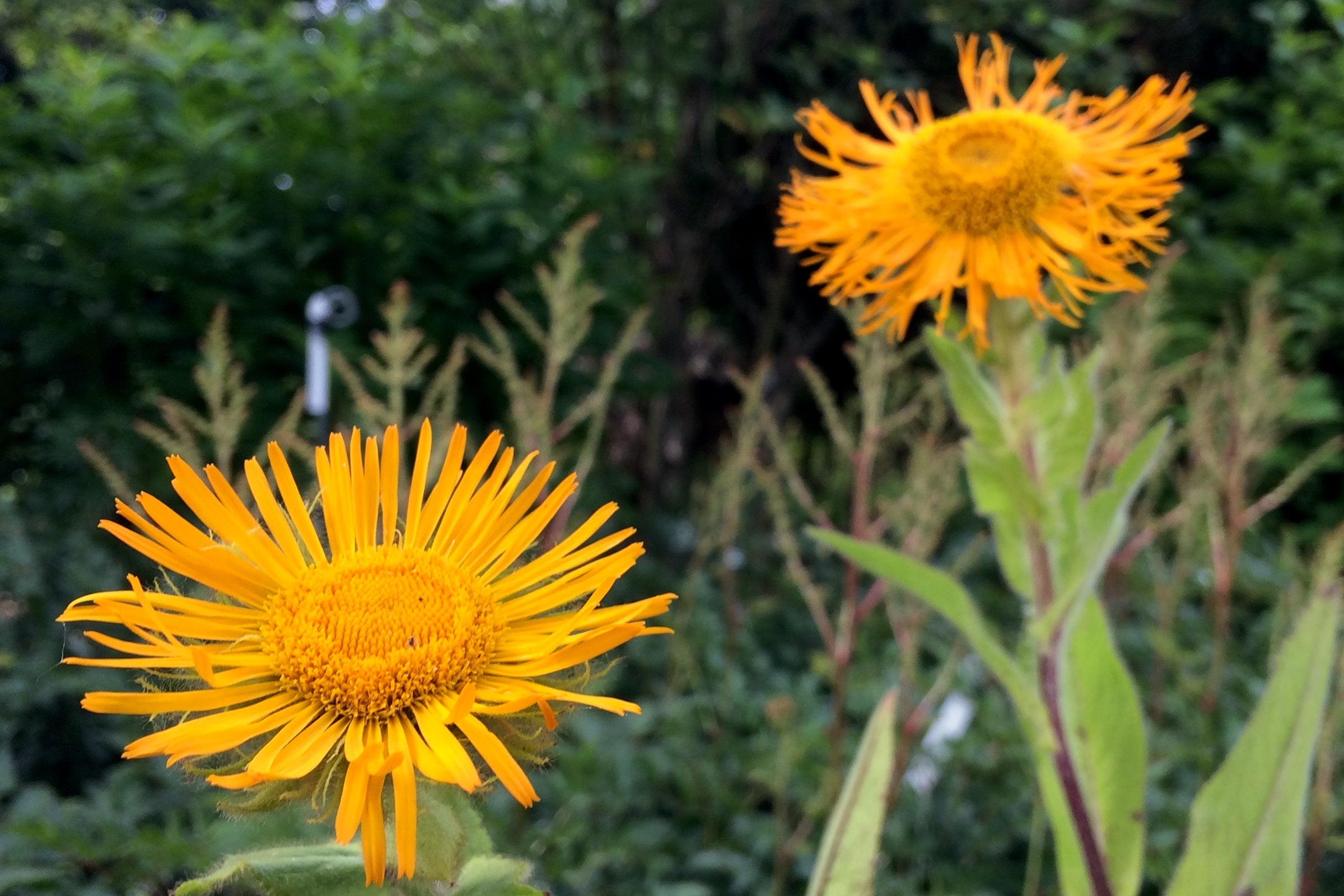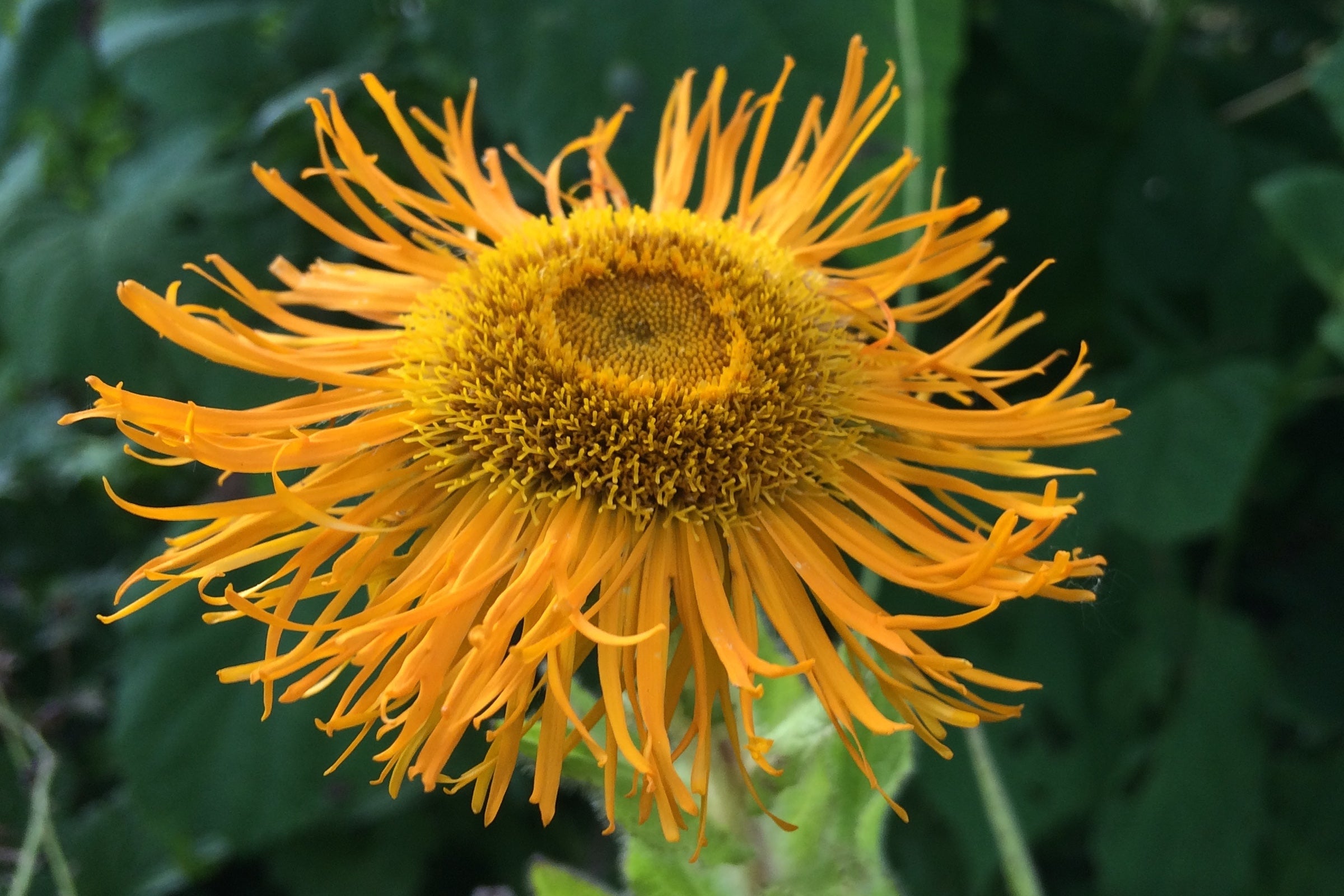Inula orientalis
Approx. 0.5 litre pot
About this cultivar:
Inula orientalis was described by Jean-Baptiste Pierre Antoine de Monet de Lamarck in 1789. Quite a low growing Inula. Some people report it grows to three feet? Not this one, so far with us maximum 1.5 feet!
- Position: Full sun, partial shade
- Soil: Almost any soil, grows well in Ballyrobert!
- Flowers: July, August, September
- Other features: -
- Hardiness: Fully hardy - grows well in Ballyrobert! H7 - Hardy in the severest European continental climates (< -20°C)
- Habit: Clump forming
- Foliage: Deciduous
- Height: 30 - 45 cm (1 - 1.5 ft)
- Spread: 30 - 45 cm (1 - 1.5 ft)
- Time to full growth: 2 to 5 years
- Plant type: Herbaceous Perennial
- Colour: Yellow, green
- Goes well with: Try other sun flowers
About this genus:
Inula (in-u-la) is a large genus of about 90 species of flowering plants in the daisy family (Asteraceae) native to Europe, Asia and Africa. They may vary greatly in size, from small species a few centimeters tall to enormous perennials over 3 m (10 ft) tall. They carry yellow daisy-like composite flowerheads often with narrow ray-florets.
Several species are popular flowers for the garden, with cultivation going back to antiquity. The name Inula was already used by the Romans and derived from Helen of Troy - perhaps a corruption of Helenium.
The Inula we grow and sell do well in our garden in Ballyrobert and are among our favourite plants. Perhaps they are my (Paul's) favourite plant next to Helenium! They grow almost anywhere that isn't too extreme but don't put them in full shade or waterlogged areas (but that is the same for most plants anyway). They sell like hotcakes here but are a devil to propagate - so buy it if it is available, it often isn't!
As for how to use them - as you like! We have them on their own, with other yellows and with some Campanula (Caroline in the photo opposite)






